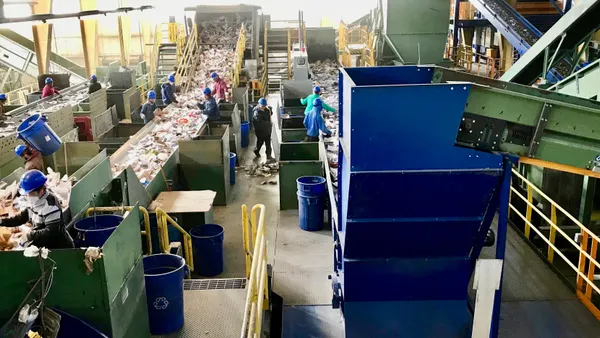Dive Brief:
- Apple's 2017 Supplier Responsibility Progress Report highlights a move toward more sustainable sourcing and diversion practices for the creation of its ubiquitous line of electronics. For the first time, the company says all of its final assembly sites in China have qualified for the UL Zero Waste to Landfill standard.
- The company diverted an estimated 200,000 metric tons of waste from these facilities in 2016, as compared to 74,000 metric tons in 2015. It also increased the number of sites certified by third-party waste audits to 15.
- The average environmental compliance score for Apple's suppliers was 87 out of 100. Waste-related issues included improper segregation of hazardous waste from non-hazardous waste. The average amount of points deducted were 4.6 and 1.0 respectively for the two categories.
Dive Insight:
Along with sourcing and labor standards, sustainability is a primary focus in the 11th annual report from Apple. Case studies detail diversion methods, efforts to recover copper from wastewater and the fact that more than 99% of the paper used in Apple's packaging now comes from recycled wood fiber or sustainably managed sources. These achievements are positive, though may do little to quiet criticism of the company's role in creating waste.
Apple's phone-recycling robot receives a lot of attention, but this is seen as a minor step toward addressing the consumption habits and electronic waste generated by the company. It has been a staunch opponent of "right to repair" legislation in states such as Nebraska and has been called out for designing new products without a clear recycling system in place.
Groups such as Greenpeace have widely criticized all phone manufacturers for their role in the electronic waste cycle. Samsung recently announced plans to design phones for repair and sell refurbished models after significant public relations issues from the recall of its Galaxy Note 7 models. The global used phone market is growing, as evidenced by increased activity among some Chinese companies, and could play a role in changing the way consumers dispose of devices.










